Psychology > QUESTIONS & ANSWERS > NCE Practice Test with explanations (LATEST UPDATE 2022) 205 Questions [88 pages] (All)
NCE Practice Test with explanations (LATEST UPDATE 2022) 205 Questions [88 pages]
Document Content and Description Below
Multiple-choice questions of any sort tap into a person's recognition memory. The person is given information from which to choose the correct answer. Recall is tapped using short-answer essays or a f... ill-in-the-blank format. Test takers are provided with very little information and must rely on their own recall memory to retrieve the answers. Organization and planning have no relevance here. An intelligence quotient (IQ) is based on: a. chronological age/mental age × 100 b. chronological age/mental age + 100 c. mental age/chronological age + 100 d. mental age/chronological age × 100 Correct Answer: d. mental age/chronological age × 100 You can eliminate the addition of 100 because a ratio such as that derived from the first part of the formula added to 100 would yield a score around 100 with some part of a fraction. Here's how you can reason out the correct answer. Suppose a person is 10 years old exactly and earns a mental age of 10 years exactly; the person's IQ would be 100 because the fraction of 10 over 10 is 1, which multiplied by 100 is 100. If this same 10-year old earns a mental age of 5, then multiplying the 10 over 5 (2) by 100 would yield an IQ of 200 (not possible). So, reversing the formula, a mental age of 5 for a 10-year-old (MA/CA) would yield an IQ of 50 (more reasonable considering the data provided). So, having a high mental age over any chronological age would yield a high IQ. Conversely, having a low mental age over any chronological age would yield a low IQ. Which of the following is NOT an intelligence test? a. WISC-IV b. WAIS-III c. MMPI-II d. WPPSI-III Correct Answer: c. MMPI-II The MMPI-II is a personality test (the Minnesota Multiphasic Personality Inventory, second edition), while all of the others are part of the Wechsler series of intelligence tests. The WISC-IV is the Wechsler Intelligence Scale for Children-fourth edition and is for children aged 6 to 16. The WAIS-III is the Wechsler Adult Intelligence Scale-third edition and is for adults. The WPPSI-III is the Wechsler Preschool and Primary Scales of Intelligence-third edition and is for children between the ages of 3 and 7 years, 3 months. MMPI-A and CPI are to _________________ as Rorschach and TAT are to __________________. a. interest inventories; subjective tests b. objective tests; interest inventories c. objective tests; standardized tests d. objective tests; subjective tests Correct Answer: d. objective tests; subjective tests The differences we are looking at here are the differences in the formats of tests. The MMPI-A (Minnesota Multiphasic Personality Inventory-Adolescent) and CPI (California Personality Inventory) are based on a true/false format with a fixed choice. They are paper and pencil objective tests, while the Rorschach and TAT (Thematic Apperception Test) are projective tests that are subjective in nature. The answers to the stimuli are unlimited. There are no fixed choices. The test taker makes up answers based on the stimulus being presented. The Rorschach, TAT, and Rotters Incomplete Sentences are all: a. projective tests b. observational tests c. rating scales d. standardized personality tests Correct Answer: a. projective tests The Rorschach is an inkblot test. The TAT (Thematic Apperception Test) is a storytelling test. The Rotters Incomplete Sentences test is a finish-the-sentence test. All of these tests are projective tests because they ask test takers to project their own thoughts and ideas into the stimuli to complete the answers. The test takers come up with their own answers freely without any suggestions or information being provided by the examiner except the stimuli. Rating scales are typically used to describe various dimensions of behavior across a number of different situations or environments. Standardized personality tests include the MMPI-II and CPI, among others. Observational tests would typically involve the examiner observing the test takers' behavior across environments or situations. One of the major criticisms of projective tests is that they: a. have too many questions b. are too subjective c. are too structured d. take too much time to administer Correct Answer: b. are too subjective Projective tests usually do not involve any "questions" per se. Remember, the test takers come up with their own answers based on the stimuli presented. Projective tests by their very nature are not structured at all. Usually the instructions the examiner gives are minimal, e.g., "What might this be?" for the Rorschach. Projective tests do take a great deal of time, but this is not the major criticism. Projective tests are very subjective, and the scoring is also very subjective, despite there being scoring manuals for these tests. A counselor may decide to administer a number of personality tests in order to: a. better understand the client b. predict future performance c. evaluate the outcomes of counseling d. All of the above Correct Answer: d. All of the above A counselor may decide to administer a number of personality tests in order to: a. better understand the client b. predict future performance c. evaluate the outcomes of counseling d. All of the above The key difference between ipsative scales and normative scales is that ipsative scales: a. allow the counselor to make comparisons among individuals b. provide information about an individual client c. include achievement and aptitude tests d. have been standardized and normed Correct Answer: b. provide information about an individual client An ipsative scale gives information about a single individual. There are no comparisons made between the individual and others. A normative scale gives [Show More]
Last updated: 2 years ago
Preview 1 out of 83 pages
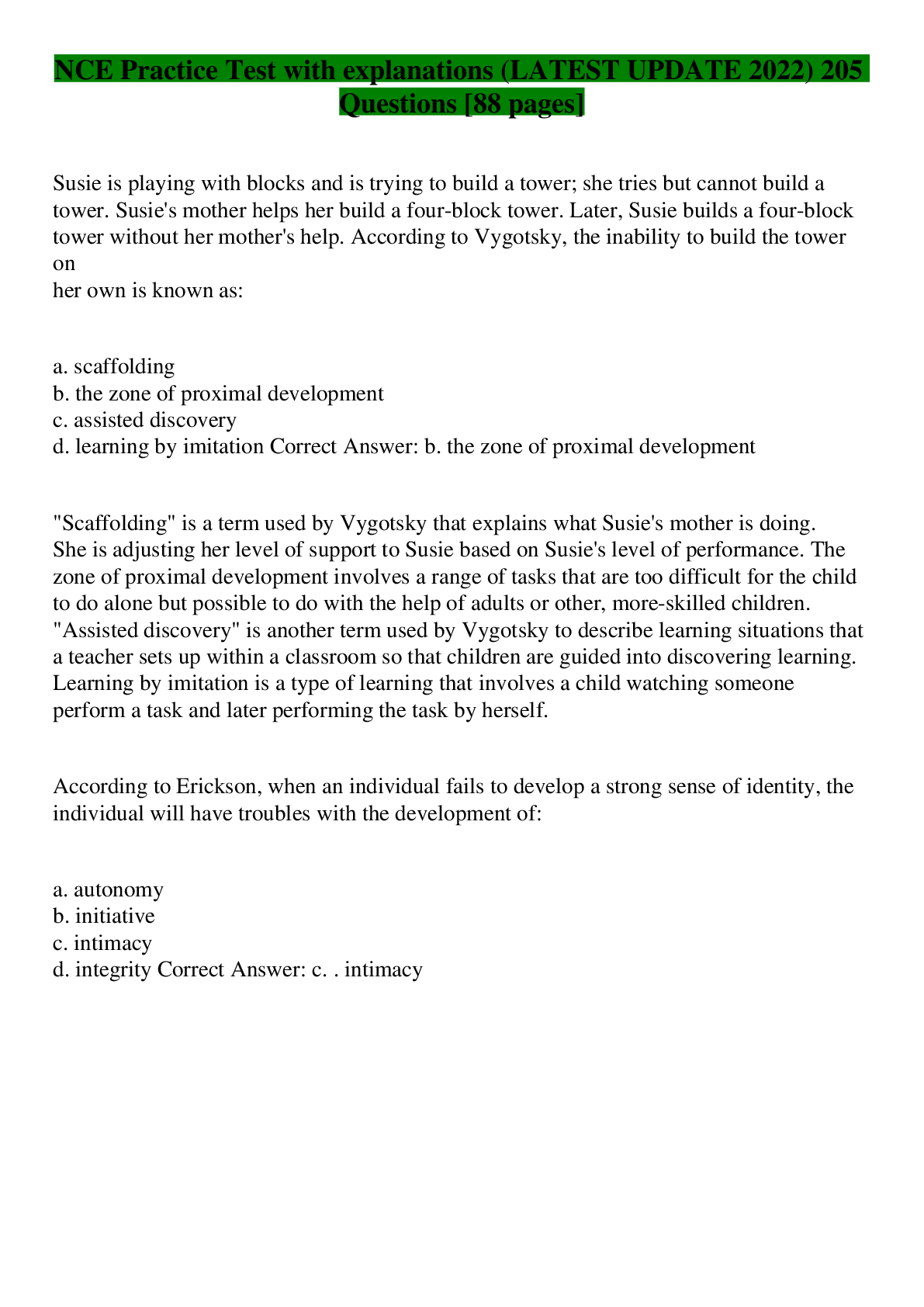
Buy this document to get the full access instantly
Instant Download Access after purchase
Buy NowInstant download
We Accept:

Reviews( 0 )
$9.00
Can't find what you want? Try our AI powered Search
Document information
Connected school, study & course
About the document
Uploaded On
Jan 07, 2023
Number of pages
83
Written in
Additional information
This document has been written for:
Uploaded
Jan 07, 2023
Downloads
0
Views
131

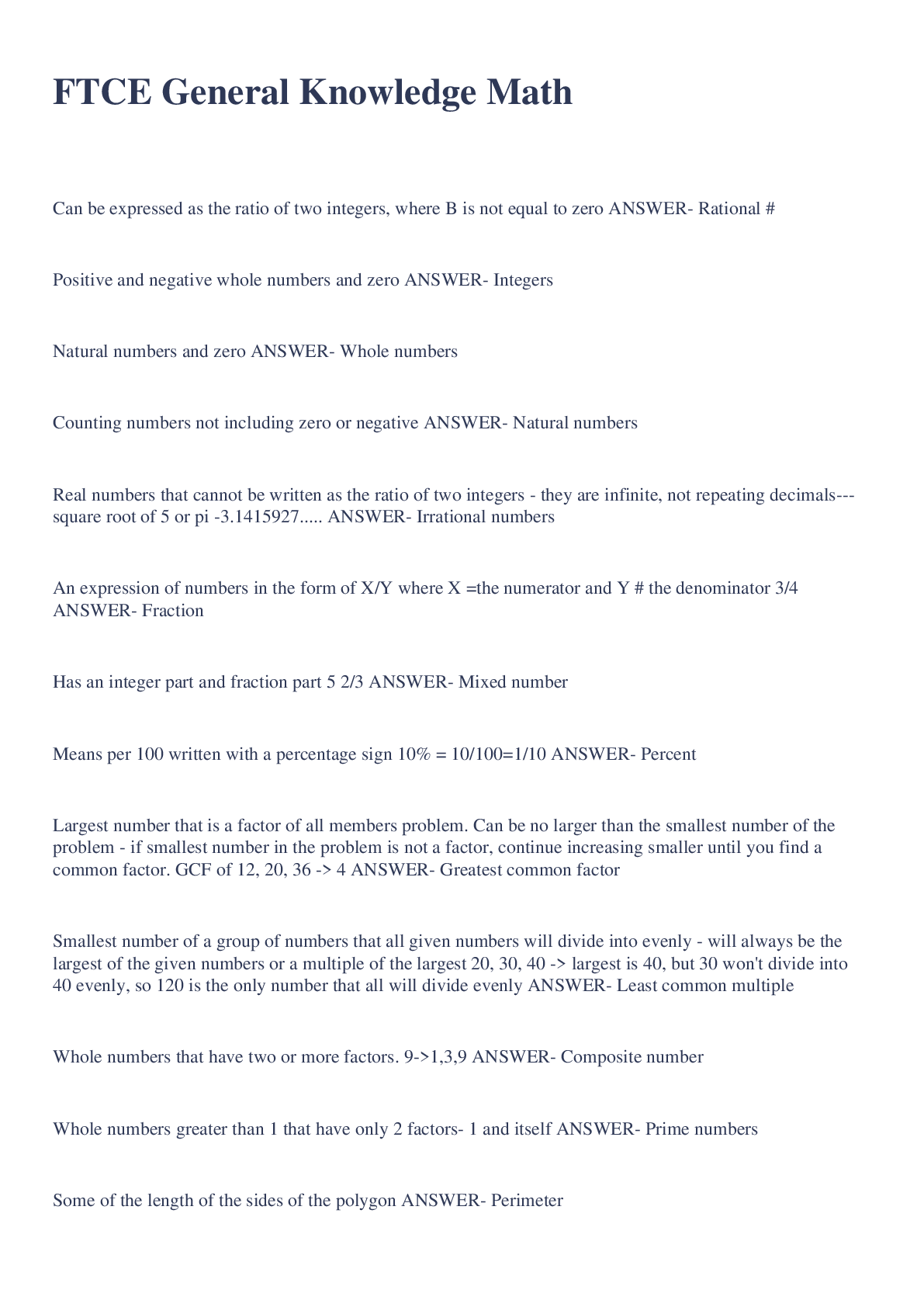
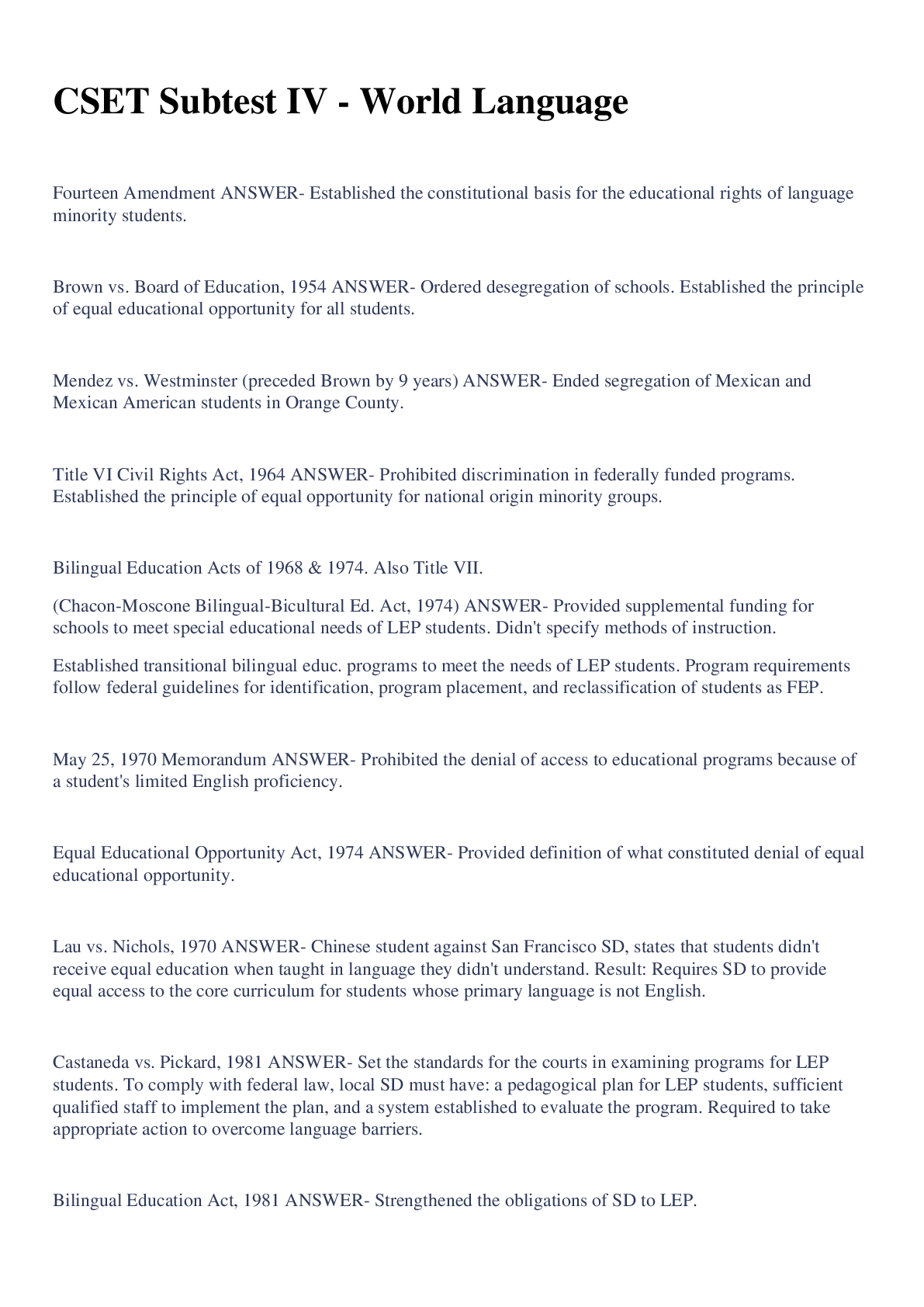
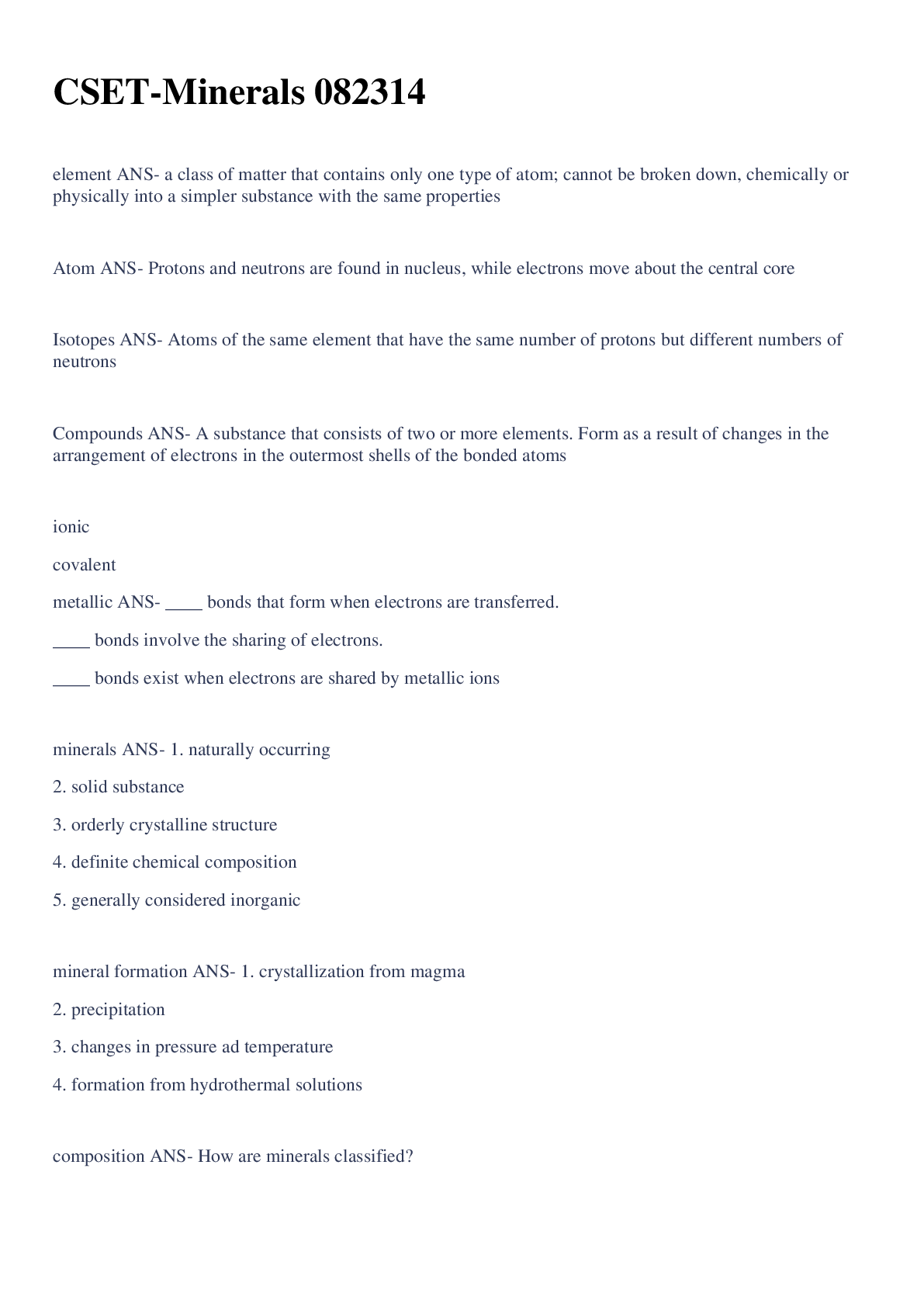
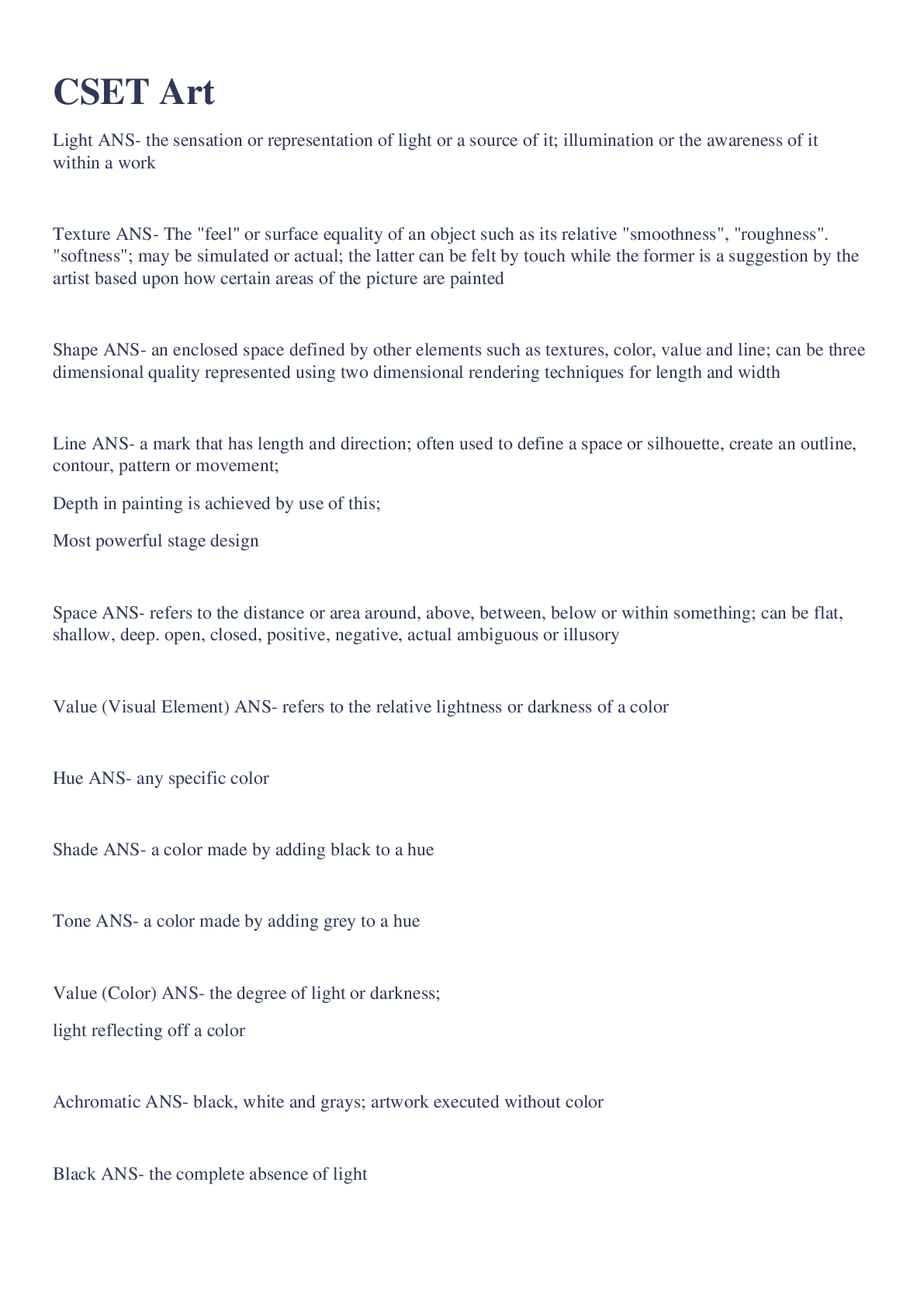
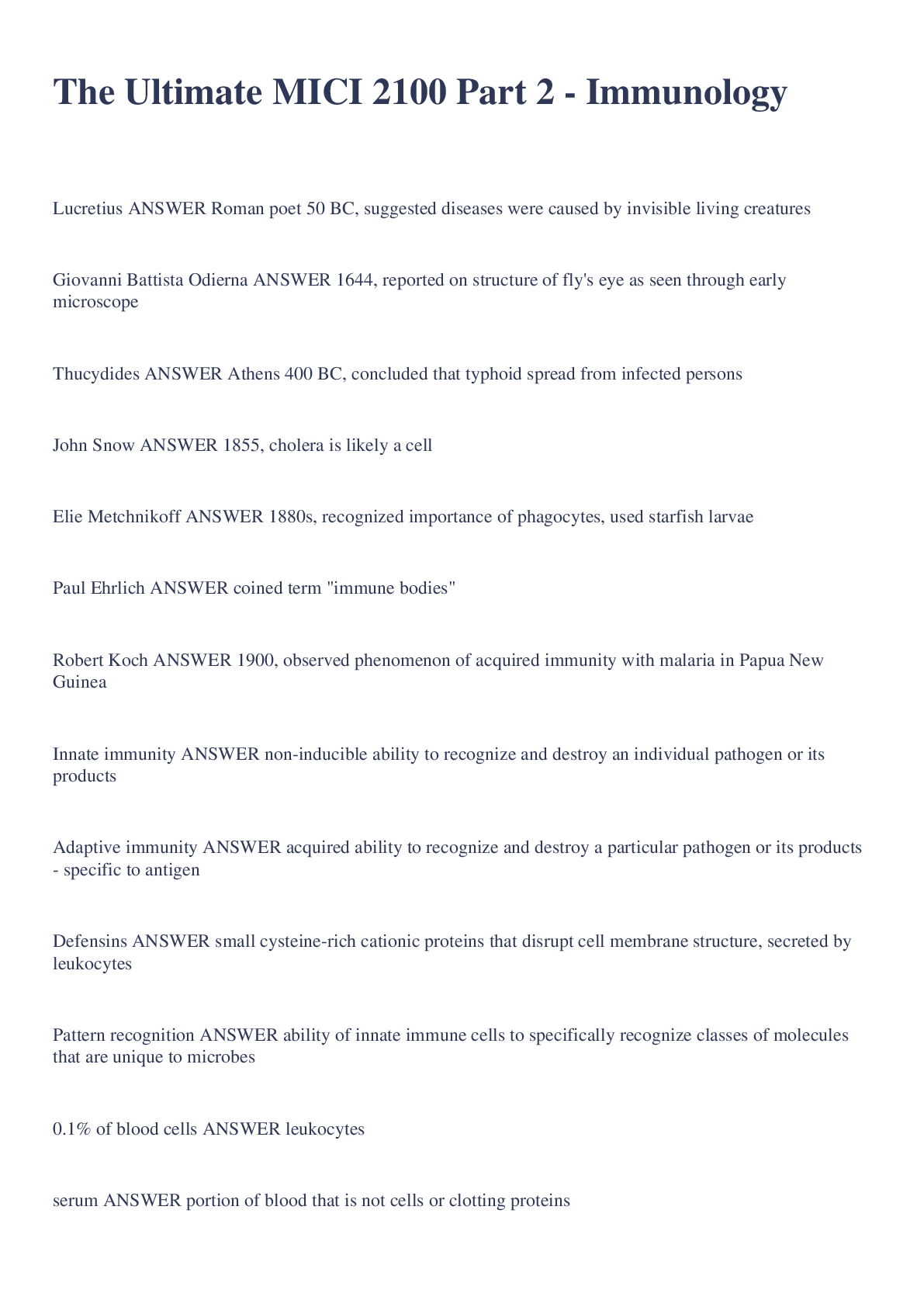
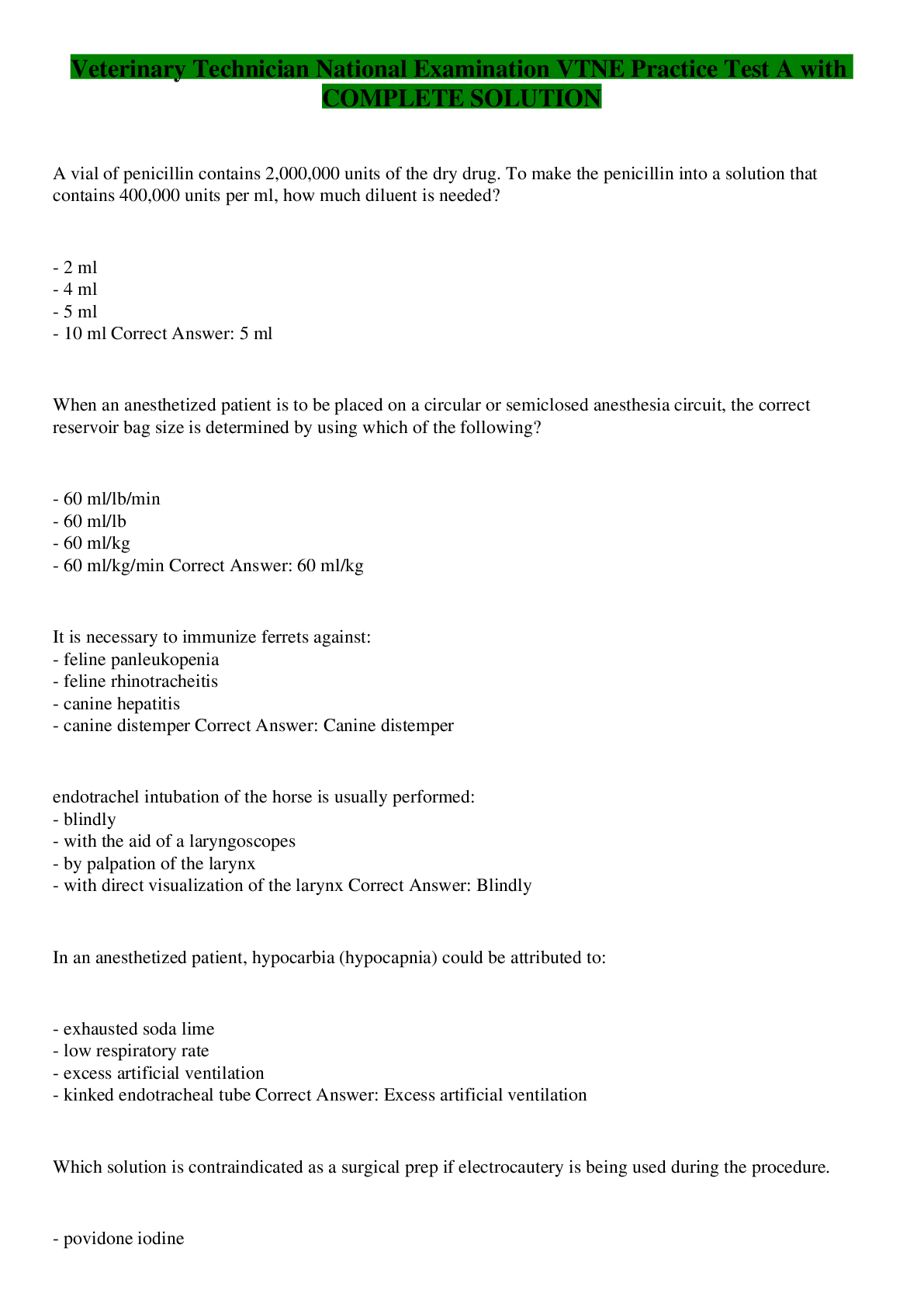
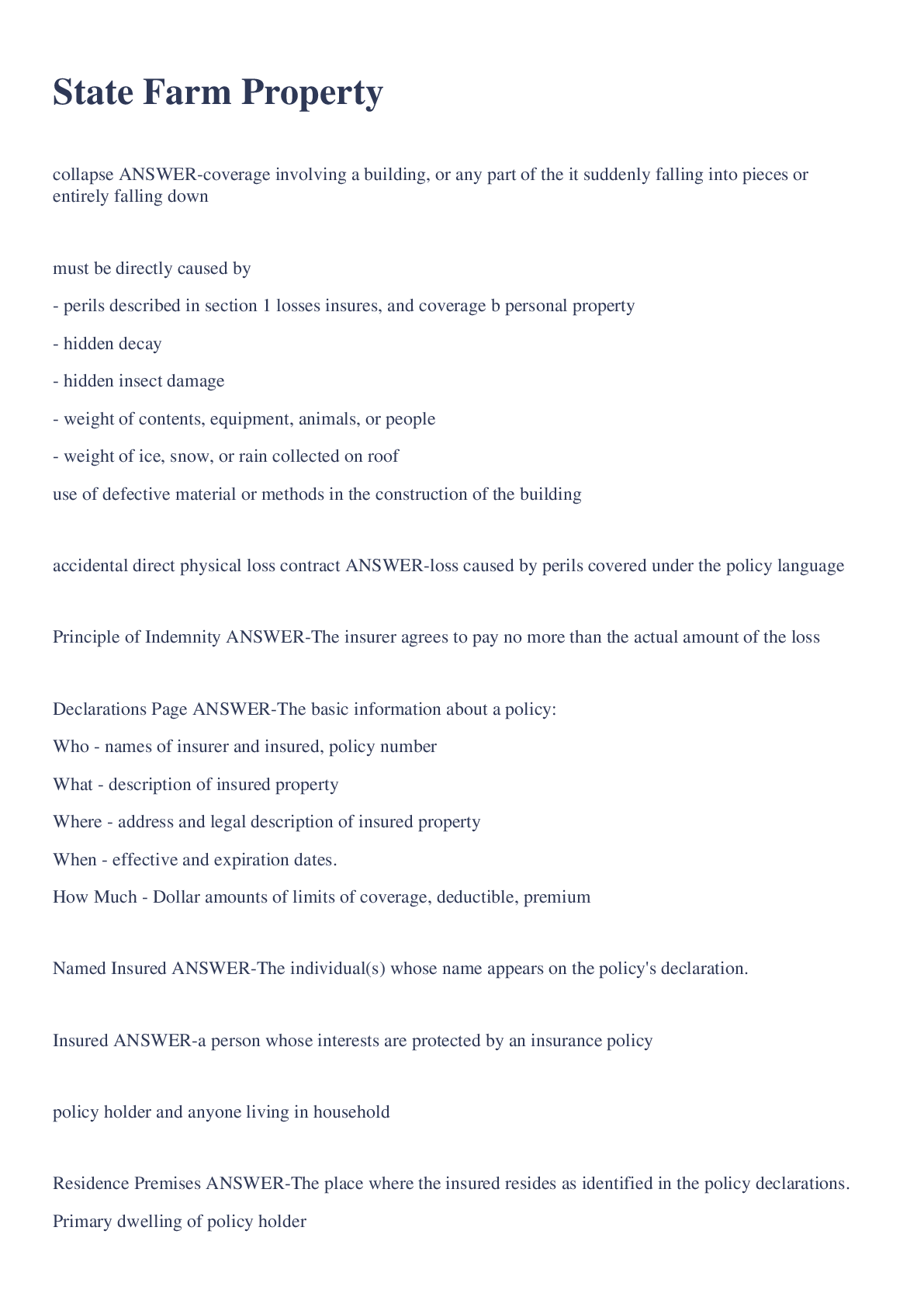
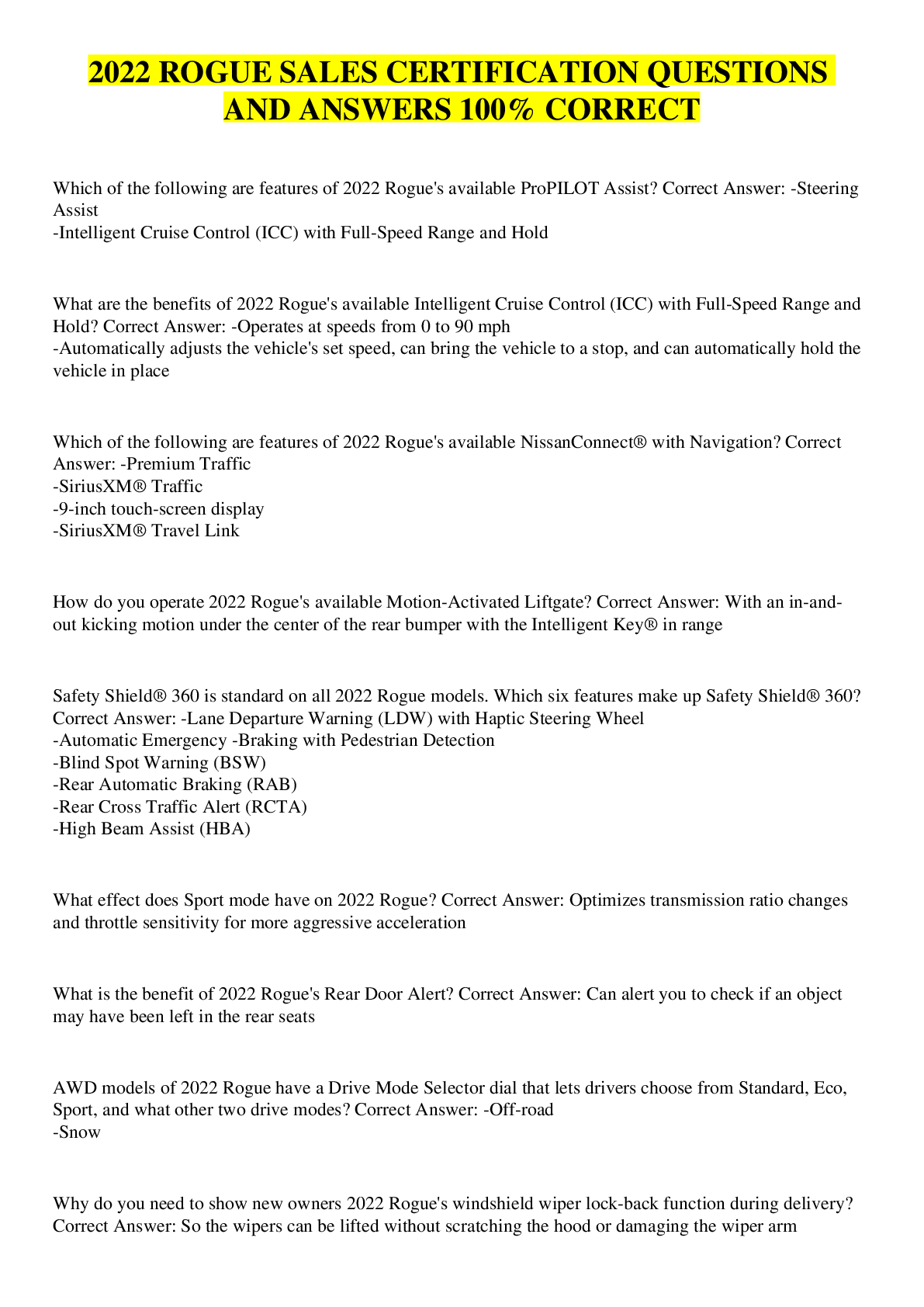
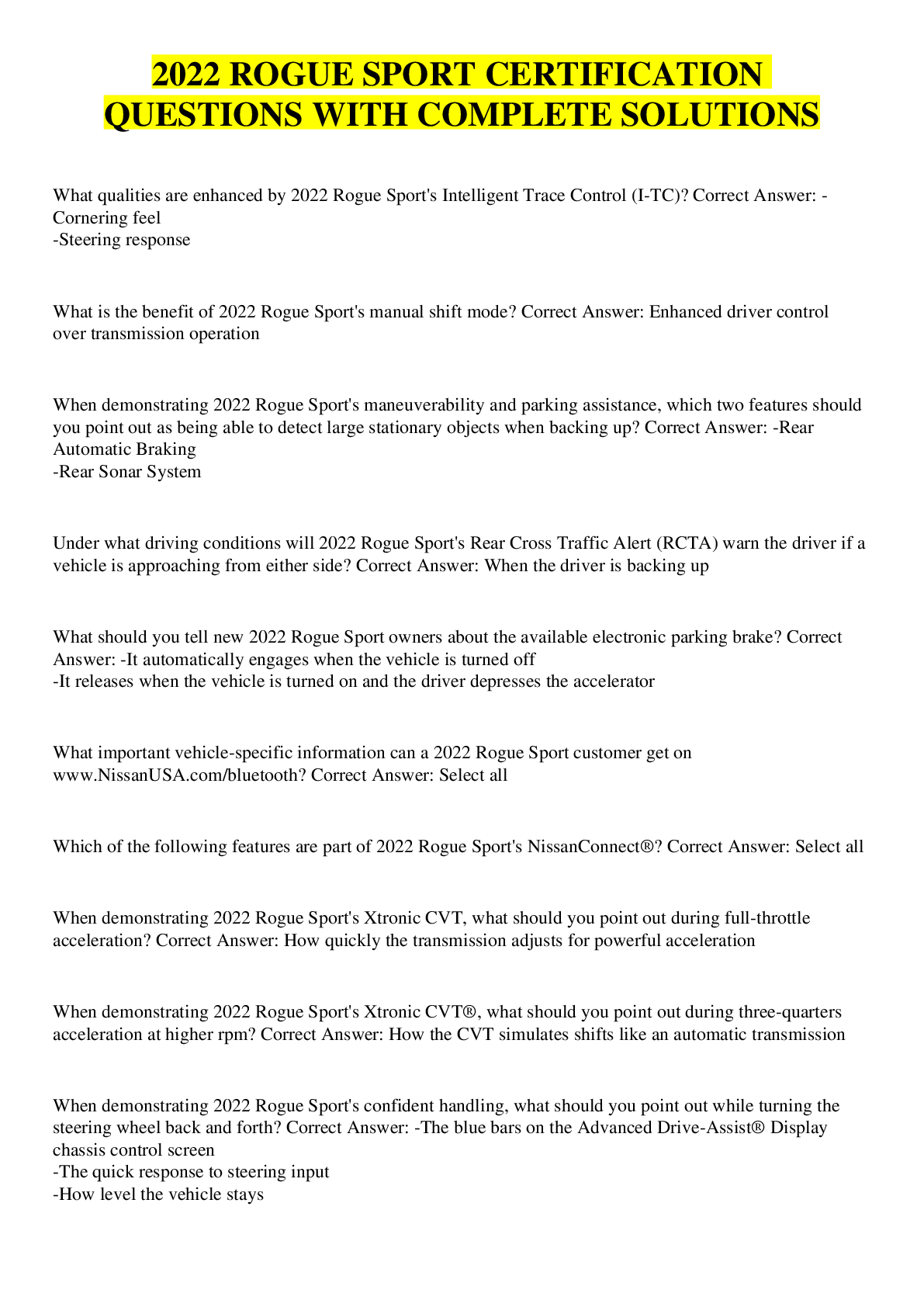
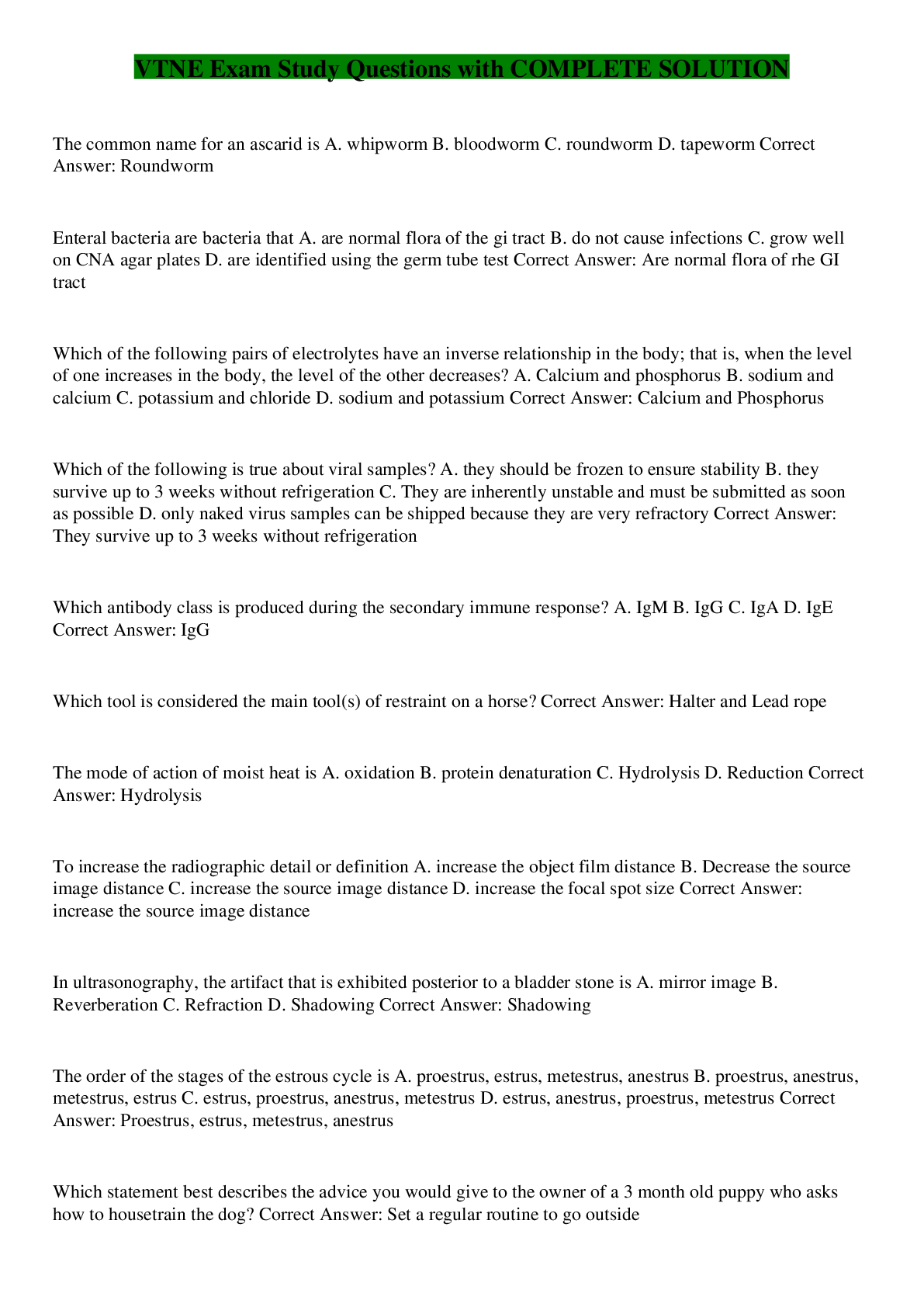


.png)

.png)
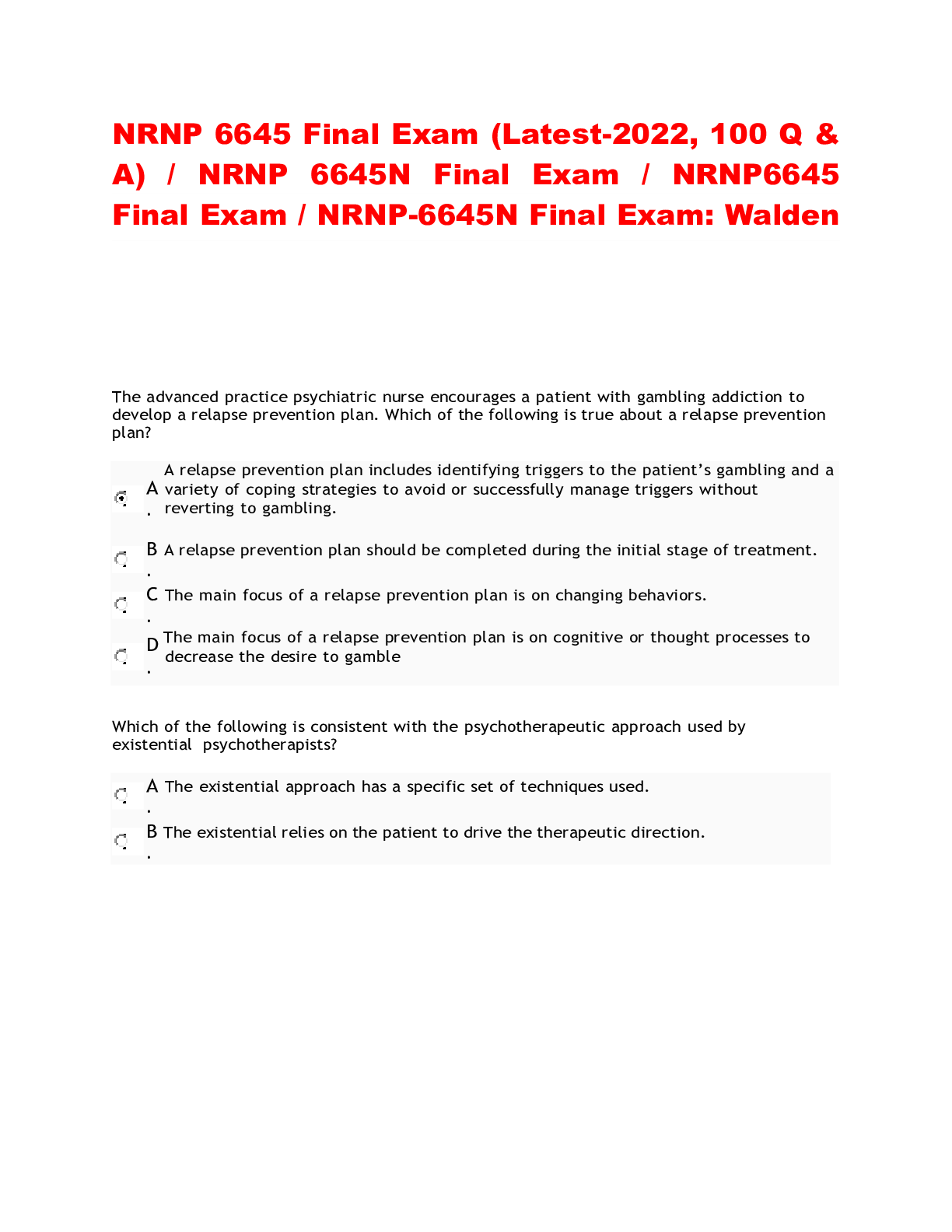
.png)

